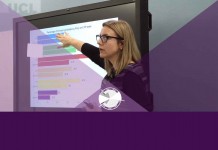Percentage –
Percentage is main topic in quant section in all competitive exams like Bank PO & clerical, CRT, SSC & various other exams. It is widely used in competitive exam because it shows comparative analysis of data.
Basically percent means change data in respect of 100 .100 is the base on which we show the data to compare or analysis.
e.g. 10 out of 20. To change this in percent
10/20 *100 = 50 %
This show that 10 is the 50% of 20.Now it is easy to understand rather than 10 out of 20.So with the help of percent we can simplified information , changing into understandable form .It is widely used in all the sector.
Download Sample Paper [wpdm_file id=22 title=”true” ]
Absolute value change –
it is actual change in value.
Percent change = absolute value change / original quantity *100
For e.g. if profit I first year is 2000 /- and in second year profit is 2200/- then the absolute change in value is 200/- so percent change is
200/2000*100 = 10%
Difference between percent change & percent point change –
Percent change is increase or decrease in a quantity and percent point change is a change in percent figures of same quantity.
Percent rule for calculation –
The ability to calculate through addition in percent is much more important, in most of problems the answer in approximate terms, in this situation this is much more important tactics to solve question.
This process contains commonsense process .For E.G.-
To solve 357/1268*100 first we look on 357/1268
10% of 1268 is 126 then 357 is more than 126 by commonsense we can assume that it is nearly 30% because 126*3 is 378
So it is 28.15%
It is easy trick to solve heavy calculation in quant section as well as in DI. In this process we focus upon to spilt numerator or denominator to solve case in easy way , but this demanded practice to familiar with this.
Percent conversion table –
The following percent values appear repeatedly over the entire area when questions can be framed on the topic of percent. So avoid to calculations you should remember these.
| 1 | 2 | 3 | 4 | 5 | 6 | 7 | 8 | 9 | 10 | 11 | 12 | |
| 1 | 100 | |||||||||||
| 2 | 50 | 100 | ||||||||||
| 3 | 33.33 | 66.66 | 100 | |||||||||
| 4 | 25 | 50 | 75 | 100 | ||||||||
| 5 | 20 | 40 | 60 | 80 | 100 | |||||||
| 6 | 16.66 | 33.33 | 50 | 66.66 | 83.33 | 100 | ||||||
| 7 | 14.28 | 28.56 | 42.85 | 57.13 | 71.42 | 85.71 | 100 | |||||
| 8 | 12.5 | 25 | 37.5 | 50 | 62.5 | 75 | 87.5 | 100 | ||||
| 9 | 11.11 | 22.22 | 33.33 | 44.44 | 55.55 | 66.66 | 77.77 | 88.88 | 100 | |||
| 10 | 10 | 20 | 30 | 40 | 50 | 60 | 70 | 80 | 90 | 100 | ||
| 11 | 9.09 | 18.18 | 27.27 | 36.36 | 45.45 | 54.54 | 63.63 | 72.72 | 81.81 | 90.09 | ||
| 12 | 8.33 | 16.66 | 25 | 33.33 | 41.66 | 50 | 58.33 | 66.66 | 75 | 83.33 | 91.66 | 100 |
| 13 | 7.69 | 15.38 | 23.07 | |||||||||
| 14 | 7.14 | 14.28 | ||||||||||
| 15 | 6.66 | |||||||||||
| 16 | 6.25 | |||||||||||
| 17 | 5.88 | |||||||||||
| 18 | 5.55 | |||||||||||
| 19 | 5.26 | |||||||||||
| 20 | 5 |
Short tricks –
- r% change can be canceled out by 100*r/ (100+r) % change in another direction. Eg: An increase of 25% in prices can be cancel out by a reduction of [100×25 / (100+25)] = 20% reduction in consumption.
- If a number ‘x’ is successively changed by a%, b%, c%…then
Final value = x*(1+a/100)(1+b/100)(1+c/100)
- The net change after two successive changes of a% and b% is (a + b + a * b / 100)






















